2023 | Generation
There’s Plenty of Work to Be Done!
In this interview, section head Sebastian Markt and section manager Melika Gothe discuss their first year together in their new positions as well as how important it is to share not just the work but also their individual film experiences and why they are delighted with the section-spanning theme of this year’s Retrospective: “Young at Heart – Coming of Age at the Movies”.
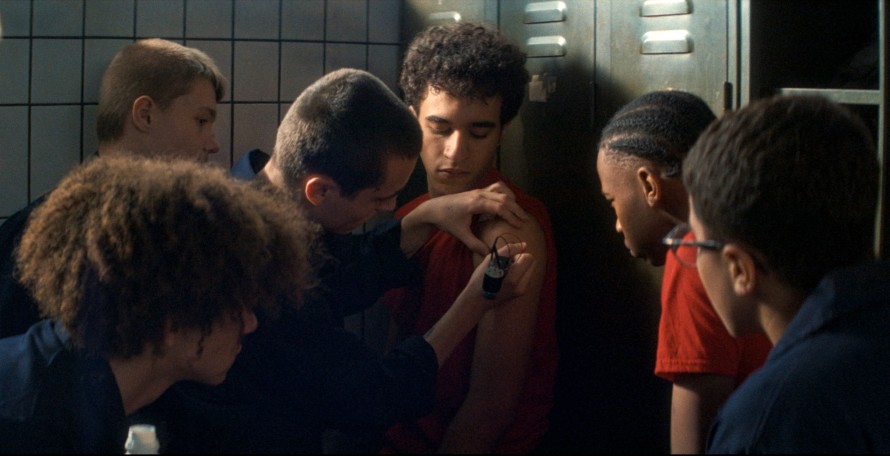
Julien de Saint Jean and Khalil Gharbia in Le Paradis | The Lost Boys by Zeno Graton
This is the first edition of Generation with you leading the section. What’s changing? Can you tell us about the new section structure and its impact?
Sebastian Markt: Melika and I have already closely collaborated while working in our different areas in the last few years. When we were presented with the great opportunity to succeed Maryanne Redpath and take over responsibility for the section in shared roles, it felt like a logical progression to us. As the section head, I’m primarily responsible for the curatorial aspect together with Carlo Chatrian. Melika is section manager and so, in addition to the administrative tasks, the area of film education is central to her work.
Melika Gothe: Film education work, as we see it, has always been an essential part of the section: creating access for young audiences among all the events of the festival. We feel it’s particularly important to ensure that the target group approach doesn’t exclude anyone. In recent years, Generation has developed into a unique festival platform that appeals to industry representatives, adult audiences and young people alike. For us, strengthening our film education work means, among other things, bringing these groups even closer together.
We’re also seeing a great deal of vibrancy in the field of film education and this is no longer just coming from film and media educators: it’s also being considered during the production, marketing and presentation of the films. We’d like to play an active role here, even extending beyond the actual festival period. I see the decision to deliberately identify film education as one of the festival’s areas of work which was implemented in the change of the management structure as a vital signal to promote and further develop film culture in this direction.
SM: That means we regard our education work in a broader sense, one that links it very closely to our programming. Conversely, from a practical point of view, it also means that we both have our own areas that we’re focusing on, but we don’t think of them in isolation from each other. Apart from the obvious advantage that we complement each other in our experiences and expertise, it’s also simply more fun to work collaboratively and to think about things together.
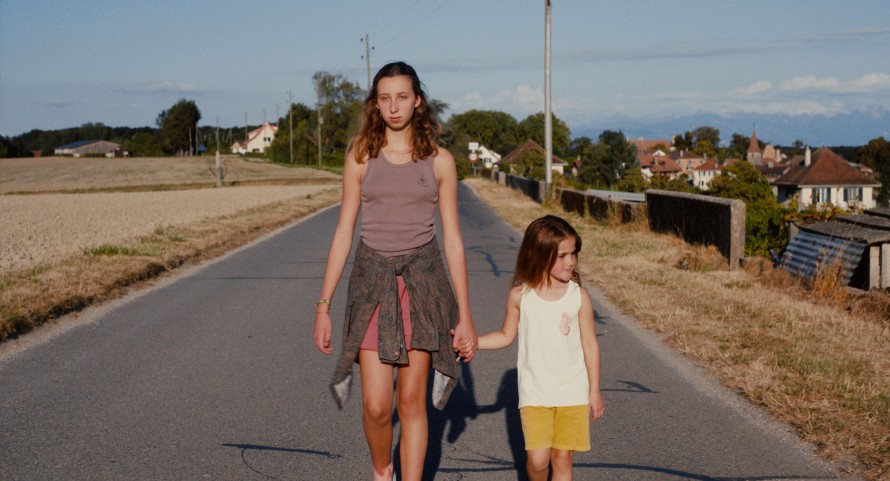
Clarisse Moussa and Esin Demircan in L’Amour du monde | Longing for the World by Jenna Hasse
Looking at this year’s programme, it’s clear that, in addition to autonomy and freedom, many of the films also address their counterparts in the shape of relationship(s) and community. In Le Paradis (The Lost Boys) by Zeno Graton, for example, a sense of community is formed in everyday life in a prison. In L’Amour du monde (Longing for the World) by Jenna Hasse, the community consists of a kind of self-chosen family. In Sofía Auza’s Adolfo, two young people find themselves sharing one destiny, as it were, for a single night. Where and how do the young protagonists find support and solace in the selected films?
MG: Relationship(s) and community are not necessarily the opposites of autonomy and freedom in the films. But it’s certainly true that some relationships are at odds with an individual’s freedom. Self-chosen communities then, in turn, create free spaces that enable the protagonists to form other versions of themselves, such as in L’Amour du monde.
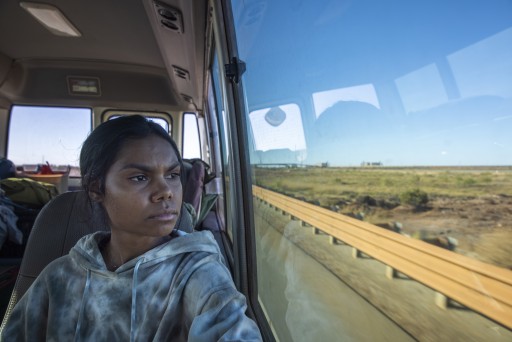
Shantae Barnes-Cowan by Sweet As von Jub Clerc
SM: Generally speaking, you can say that the question of an individual’s own place in the world, of the relationships they have with other people and also with themselves, is something that takes up a lot of space in the coming-of-age genre – or in films in general which are dedicated to the perspective of young protagonists. The responses or motifs that can be found in the programme are correspondingly varied. Some films also explicitly reflect on this topic.
In the short essay film To Write From Memory by Emory Chao Johnson, a young trans director searches in a very direct way for a fitting image of their own identity during and after transition, a search they are undertaking for their own sake. But at the same time, this isn’t happening in a vacuum – in this case, it is exemplified in their relationship to their mother. Sweet As by Jub Clerc tells the story of a young Indigenous woman who is placed in a hands-on educational project based on photography in which – through the viewfinder of the camera, so to speak – she’s able to gain a new view of her surroundings, of the land of her ancestors, and also of herself.
With Desperté con un sueño (I Woke Up With a Dream) by Pablo Solarz, the same thing is achieved by theatre. Standing on the stage and taking on a role opposite another person becomes a leitmotif for a young aspiring actor as he searches for a buried family history.
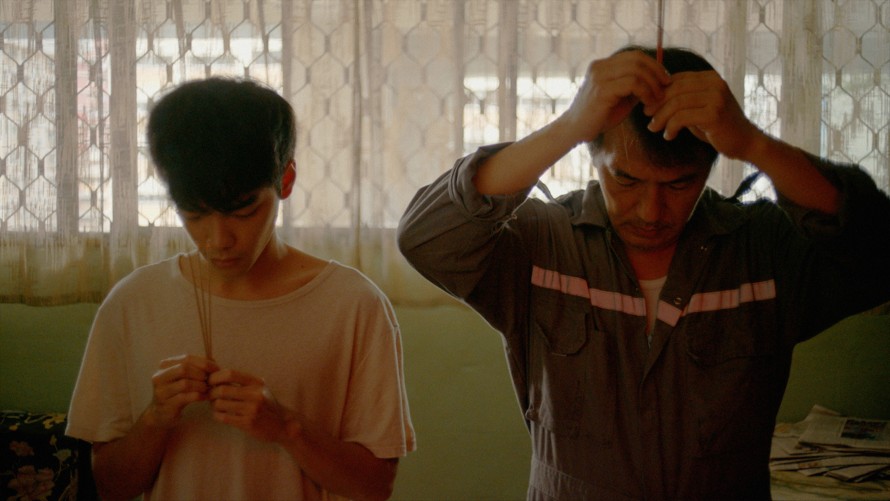
Edward Tan and Leon Dai in Míng tian bi zuo tian chang jiu | Tomorrow Is a Long Time by Jow Zhi Wei
In both Míng tian bi zuo tian chang jiu (Tomorrow Is a Long Time) by Jow Zhi Wei and Darvazeye royaha (Dreams’ Gate) by Negin Ahmadi, a military environment creates a form of community and solidarity, which seems to be rather a strange message in a time when wars and acts of war are so prevalent. How is this topic reinterpreted or presented differently in the films?
SM: I don’t think that’s the message in the films because the military environment in both works is quite complex and, above all, ambivalent. Encounters with the military, be it through war, directly or indirectly, are unfortunately part of everyday reality for many young people and this is also reflected in the cinema. But neither of those two films could be accused of glorifying war.
In Míng tian bi zuo tian chang jiu, the protagonist finds himself in a completely different environment after a traumatic disruption in his life. The film also presents this as a radical aesthetic disruption: as a changed perception of space and time, and the way in which contact with other people works. The context of the army is of secondary importance here, and there is little to be detected of what would otherwise define an army: hierarchy and discipline. The military aspect of warfare is definitely part of what is depicted in Darvazeye Royaha. But at the same time, the film is full of tender observations of a specific form of camaraderie that the often very young women in the Kurdish militia discover and that is certainly not derived from the fighting. The film thus creates a clear counter-image to the predominantly male iconography of war.
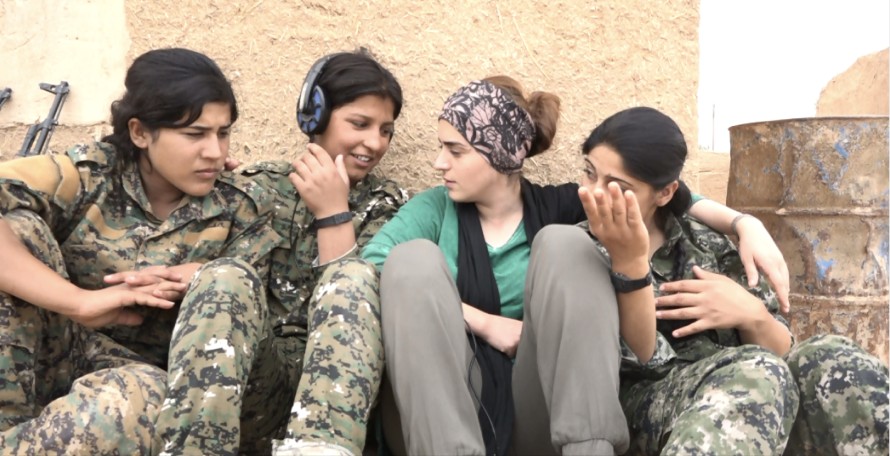
Darvazeye royaha | Dreams’ Gate by Negin Ahmadi
Darvazeye royaha contains extremely hard-hitting footage from Kurdistan, a place which is constantly being exposed to military attacks, sometimes without any real warning – how can an audience, particularly one that is still young, be expected to cope with this?
SM: It’s true that the film contains scenes that clearly show the brutality of life in war. This is one of the reasons why we are screening the film with an age recommendation of 16 and above. But irrespective of age, the images a person is willing and feels able to expose themselves to is also an individual question which is why we try to make it clear in the programme texts what audiences can expect from each work. In this case, we believe that the film finds a responsible way to deal with its images and offers audiences a chance to tackle something that is unfortunately a real part of the contemporary world. Generally, and especially when it comes to challenging topics, we’re looking to create a programme that’s empowering our audiences rather than unsettling or even traumatising them.
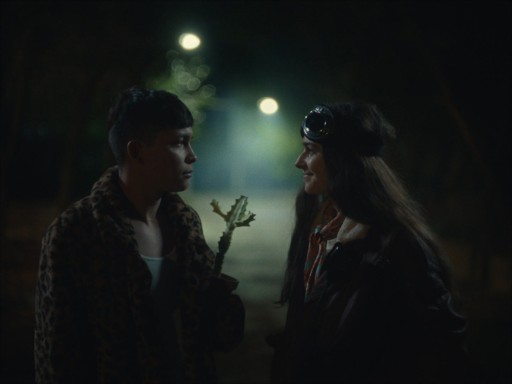
Juan Daniel García Treviño and Rocío de la Mañana in Adolfo by Sofía Auza
How do you assess what is important information and educational work and where the films could start to overwhelm or, in the worst case scenario, (re)traumatise people? Do you provide any introductions to the films beforehand? How helpful can post-screening discussions be?
MG: The essential thing is to consider the way in which the respective film is embedded in the specific festival context. This already begins with the programme announcement – how do we introduce this film? How aware are we of who our audience is? For whom and from what age do we recommend the film? In addition, experiencing the film together with other people in the cinema plays an important role – and I’m emphasising experiencing here. Even if everyone leaves the cinema in silence, that still forms a resonance. The film discussions, which we can offer after many of the screenings, are of course a central part of the festival experience: they enable audiences to get closer to the filmmakers and can help them to express their thoughts and feelings in a mutual exchange. So I’d speak less of education in terms of “information and educational work” and more in terms of experience and debate.
SM: The question of what is appropriate is one that we take into account throughout the film selection process and which is prominent in the discussions with our selection committee – which comprises people from a wide range of backgrounds. Of course, this means that every year there are films we find great in many ways, but we don’t include them in the programme because we feel that they overstep certain boundaries we believe are important for us to observe. A key moment in the decision-making process is whether we think that a film – in what it depicts and in the language it finds to depict it – to some degree provides the means to allow a young audience to process and understand what they are seeing.
To return to Darvazeye royaha: it is definitely not a film that looks to have a spectacular, exploitative shock effect. Instead, it takes a thoughtful, reflective approach and repeatedly asks the questions: What images do we have of war? What can we learn about war at the level of images? And what can we not? What does war do to the people whose lives it affects? We consider this important at a moment when images of war are omnipresent in young people’s everyday lives.
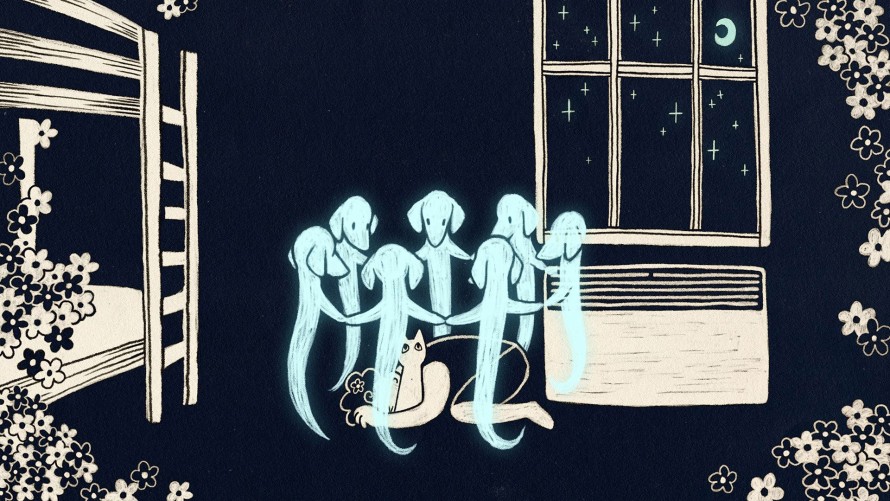
Deniska umřela | Dede Is Dead by Philippe Kastner
In other, shorter films, it’s more about inner turmoil: Antes de Madrid (Before Madrid) by Ilén Juambeltz and Nicolás Botana and Crushed by Ella Rocca – the former fictional, the latter highly autobiographical and documentary in form – both explore the feeling of young desire...
SM: Yes, questions of attraction and desire and what it does to you, what connects you to other people and what kind of relationships we would like to have are an important theme in the cinema that deals with adolescence. A large chunk of the programme could be characterised as dealing with inner turmoil. We like the fact that the programme covers a wide field with this issue. This ranges from the two 14plus films mentioned above – which depict desire in the narrower sense of the word – to films that look at the question of emotional connection in other ways: sibling relationships, for example, in Entre deux Sœurs (Among Sisters) by Anne-Sophie Gousset and Clement Ceard. Or, in a different register entirely: anger, for which the two Kplus films Sværddrage (The Shift) by Amalie Maria Nielsen and Magma by Luca Meisters each find their very own film language.
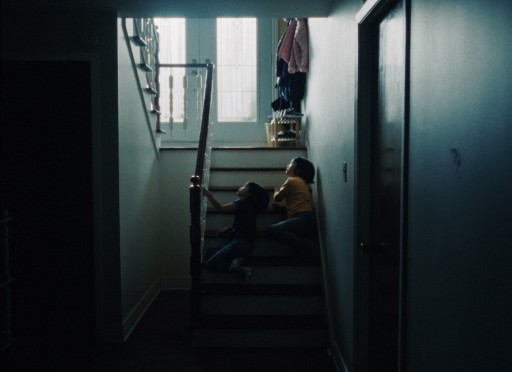
Kylie Le and Van Pham in Nanitic by Carol Nguyen
Several films deal with the topic of death (Sea Sparkle by Domien Huyghe, Sica by Carla Subirana, Dede is Dead by Philippe Kastner, Nanitic by Carol Nguyen). What different ways and means of expression do the films find to tackle this subject matter? Are there diverging approaches in the Kplus and 14plus programmes?
MG: Yes, you’re right. Last year we had a remarkable number of dead parents, this year dying grandmothers and pets are added to the mix. Taken as a whole, the films that deal with death in this year’s programme range from the moment in which the young protagonists become aware that something has changed (A Greyhound of a Girl by Enzo d’Alò) and the moment of caring for a loved one (Nanitic) to tackling actual death, the forever absence of a loved one (Sea Sparkle, Sica) and coming to terms with the loss (Dede Is Dead, Desperté con un sueño, Adolfo).
The films make it clear that saying goodbye and mourning are very individual processes that can find their expression in different emotions and, above all, are perceived in different ways – such as in Nanitic: for Trang, her grandma’s death is something new. Unlike the adults, she doesn’t have any concepts, experiences or existing wounds to fall back on. This means that she seems all the more able to perceive what is happening: within the family, with the dying person and even with the aspect of time around her.
SM: The boundary between the Kplus and 14plus competitions is not a hard one but, instead, gradual: the films that we recommend for ages of five and up in Kplus are very different from the ones we recommend for ages of twelve and up in the same competition. In general, you could say that the films in 14plus have a different way of dealing with ambivalence and contradictions, and a different complexity in their formal language – and that they also have different starting points in terms of perspectives and experiences.

And the King Said, What a Fantastic Machine by Axel Danielson, Maximilien Van Aertryck
The topic of growing up and coming of age is of course omnipresent in Generation, but in this edition the section also seems to be tackling the “coming of age” of film itself in And the King Said, What a Fantastic Machine. How does this film by Axel Danielson and Maximilien Van Aertryck fit into the section and its focus? And in what phase of life is the moving image today (to use the logic of that film)?
MG: That’s an interesting parallel. Far too often, coming-of-age films are reduced to dealing with growing up, as if that were a single process that can be completed within a certain structure. Our programme shows once again that this is a process that undergoes various phases, takes detours and, above all, that childhood and adolescence are realities standing in their own right which, when viewed by themselves, have an incredible amount to tell. With reference to And the King Said, What a Fantastic Machine, you could say that the history of film, like childhood and adolescence, does not represent a linear development process but instead constantly develops in interaction with society.
SM: What also excited us about And the King Said, What a Fantastic Machine is that it places a frequently discussed issue – the ubiquity of image-centric social media – in an unusually broad context: that of the history of photographic media and cinema itself and the culture they create. This forms a reflective space within the programme that shines a light on the other films. I would also include Ramona by Victoria Linares Villegas in this reflective space. For reasons of research, an actor who is set to play a pregnant teenager talks to teenagers who are actually pregnant – and they increasingly take over the story. The film thus becomes a powerful act of self-questioning about the ethics of representation: What does it mean to want to speak for others? What are the limits when it comes to appropriating someone else’s voice?
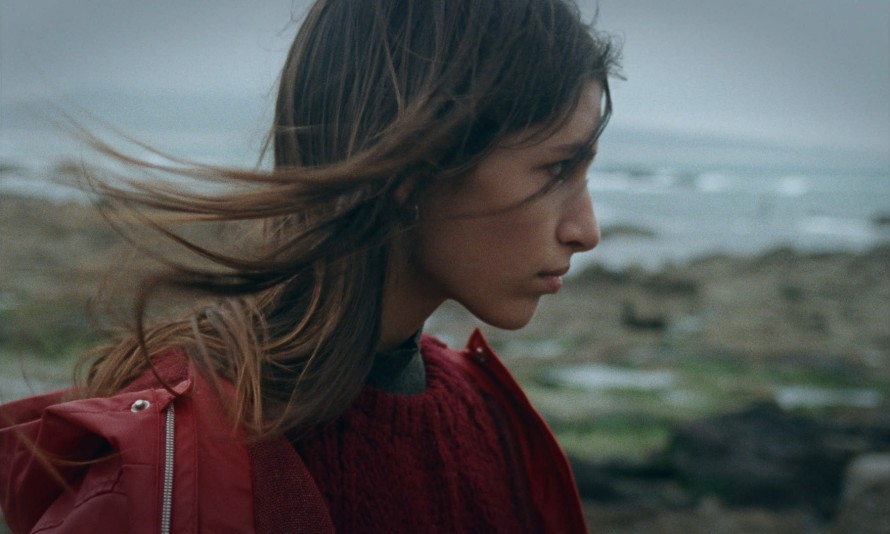
Thais García Blanco in Sica by Carla Subirana
The approaches in the films are wide-ranging. Which one did you find most thought-provoking? Which one do you consider to be a “feel-good film”? Which one made you laugh the most and which one maybe even made you cry?
MG: Sica immediately springs to mind. The film had barely started, I didn’t really know yet where we were or what was happening but the way the protagonist, Thais García Blanco, was looking out to sea and everything that was in her gaze, that really hit me in the literal sense of the word. For me, crying in the cinema is part of the overall experience: emotions are crystalised or simply captured in images. Or perhaps the film succeeds in conveying something that was previously alien or unknown to me. I find this particularly powerful in coming-of-age films, because the experience sometimes allows me to deal with feelings that I wasn’t able to find an expression for when I was young, or whose significance is only now becoming clear to me. Another good example is our Kplus opening film Zeevonk which – just like Sica – is about a traumatic event. What touched me so much about this film was the anger that the protagonist Lena is allowed to experience and act out in the film. Angry girls are – still – seen all too rarely and I found this film incredibly empowering. I often text Sebastian after such films, basically saying: “I just experienced something big that I want to share with you.”
That’s just as much fun, by the way, as hearing Sebastian’s laughter through the door of the screening room.
SM: (laughs) For us, feeling emotions together and sharing them as an important part of the cinema experience begins even before the festival starts! Laughter is a key aspect in that. So far, your questions have mainly focused on the difficult topics. But the programme is actually very multifaceted in its emotional tones and contains a lot that is funny and hopeful. This starts with the 14plus-opening film Wann wird es endlich wieder so, wie es nie war (When Will It Be Again Like It Never Was Before) by Sonja Heiss which has a very complex mood but is also intoxicatingly funny. Aatmapamphlet (Autobio-Pamphlet) by Ashish Avinash Bende is a childlike romantic comedy that also relates recent Indian history at a virtuoso pace and with visual ingenuity and presents a satire on nationalism. Hummingbirds by Silvia Del Carmen Castaños and Estefanía “Beba” Contreras, to cite another example, is a documentary self-portrait of two young Latinx directors who grew up on opposite sides of the US-Mexico border. The film is a wonderful portrait of a friendship in resistance against the world’s adversities.
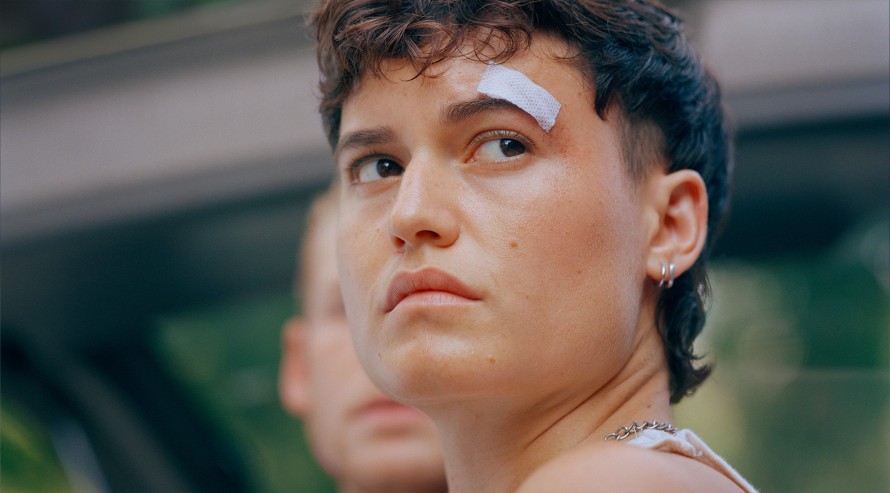
Lío Mehiel in Mutt von Vuk Lungulov-Klotz
Coming of age is a theme of the festival, with this year’s Retrospective entirely devoted to the topic. Is it all a bit old hat for you?
MG: Above all, we’re pleased that this year’s Retrospective programme is also showing the manifold ways in which the topic of “growing up” can be dealt with in film, across all the cinema cultures and decades represented, and that the films the curators have chosen go far beyond the often very narrow definition or, rather, notion of what coming-of-age cinema is within film discourse.
SM: This look at film history and the explicit topic of coming of age as a specific form has developed into an interesting dialogue for us which hopefully will continue in the same way for the audience. Not everything that we find interesting in the context of Generation is a coming-of-age film but, on the other hand, the history of coming-of-age cinema can also provide us with an insight into social changes.
For example, a few years ago you would have been hard pressed to find something like Mutt by Vuk Lungulov-Klotz. The film tells the story of a day and a night in the life of a young trans man, stars a trans actor and is the work of a director who is trans himself. It can certainly be read as a coming-of-age drama but at the same time it makes it clear that the classic form of coming-of-age films is founded on prerequisites that do not apply to everyone in the same way.
MG: I always find it interesting to see when young people’s perspectives are perceived as enriching and when they tend to be rather ignored. It sometimes seems to me that, as soon as young audiences are being considered, too, something changes. Therefore it’s all the more fantastic that the Retrospective programme and Generation are creating so many connections this year – it’s a dialogue between cinematic traditions and generations as well as different sections of the audience.
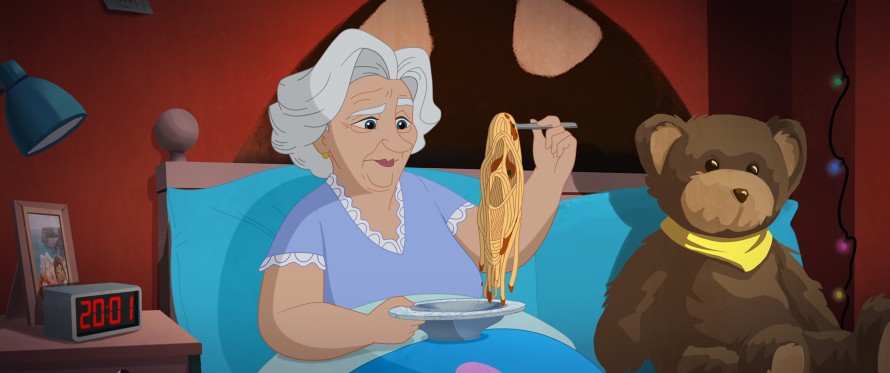
A Greyhound of a Girl by Enzo d’Alò
This year, Generation is marking its 46th edition. What do you see when you look back on more than four decades of cinema for younger and young-at-heart audiences – and what do you wish for in the future?
MG: I still look back with an inquisitive eye and I continue to consider myself to be learning. Our aspiration to develop the section further goes hand in hand with our aim to understand and appreciate what has happened up to this point. A major contribution to this has been our close, joint collaboration with our previous section head Maryanne Redpath during recent years. And also our discussions with colleagues who have been part of the section since the early years.
In any case, for the future I hope that we’ll always create the space for us to rethink how our programmes can be shaped. And I wish that young audiences and films for young audiences can already trigger the enthusiasm and interest at first glance that they, in any case, often attract at the second.
SM: At a time when cinema is in the midst of radical change, this is a central task that is not new, but which keeps on coming up: What can we, as a festival and as a section, do to work together on a film culture that ensures a sustainable future and considers young people to be not only a niche or target group for marketing, but central players. This also touches on a basic motive in our work, on a personal level, but above all in terms of what we want to achieve at Generation: to pass on our enthusiasm for very specific films and also for cinema in general. So there’s plenty of work to be done!